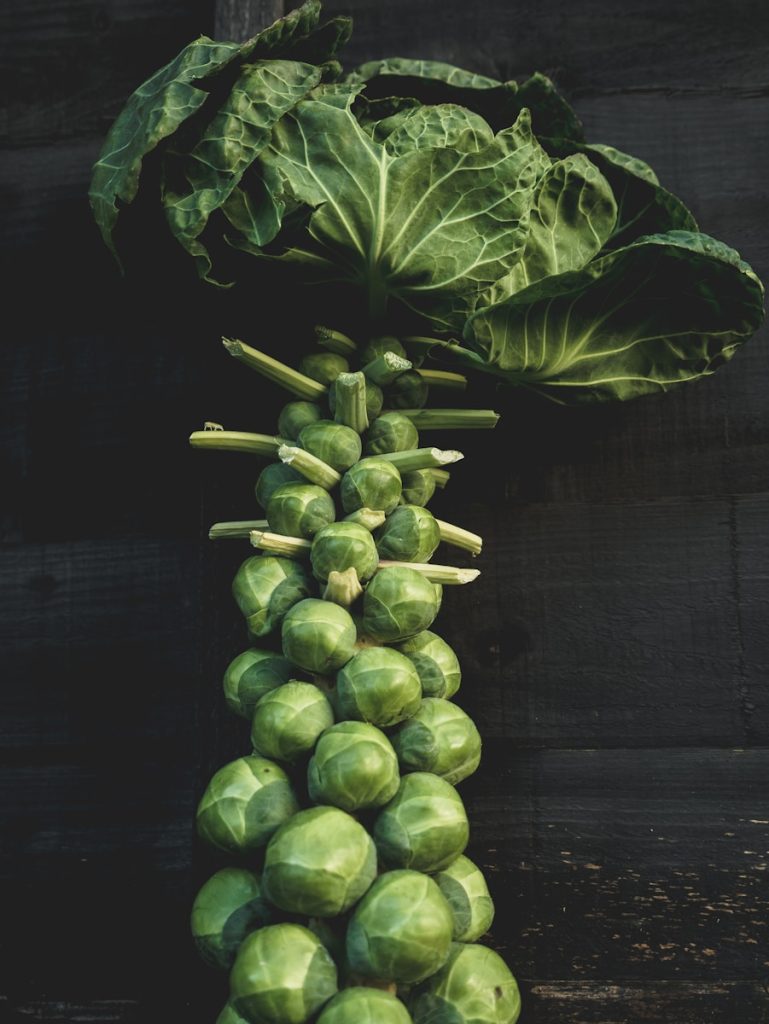Growing Brussels sprouts in Alabama is totally possible—with the right timing and care, you can enjoy fresh, flavorful sprouts straight from your garden. Whether you’re in north Alabama with colder winters or the southern coastal plain with milder conditions, this cool-season crop rewards patience with big flavor and impressive yields.
Let’s dig into everything you need to know about what Brussels sprouts are, when to plant them in Alabama, and how to grow them like a pro.
🌱 What Are Brussels Sprouts?

Brussels sprouts (Brassica oleracea var. gemmifera) are a member of the cabbage family. They look like tiny cabbages growing along a thick, upright stalk. Each plant can produce 50–100 “sprouts,” which are harvested individually as they mature.
They’re packed with vitamins C and K, fiber, and antioxidants. And when roasted, sautéed, or steamed just right, they’re delicious—even for people who once swore they hated them!
These plants thrive in cool weather. That’s important, because heat causes them to turn bitter and bolt (go to flower). In Alabama’s climate, timing is everything.
📅 When to Plant Brussels Sprouts in Alabama
In Alabama, you have two general planting windows, but fall is by far the best time to grow Brussels sprouts. That’s when you’ll get the best flavor and the longest growing window without dealing with heat stress.
Here’s a regional breakdown:
🟩 North Alabama (Zone 7a–7b)
- Best planting time: Mid-July to early August (start seeds indoors)
- Transplant outdoors: Late August to early September
- Harvest: November through January
🟨 Central Alabama (Zone 8a)
- Start seeds indoors: Early to mid-August
- Transplant: Late August to mid-September
- Harvest: December to early February
🟧 South Alabama (Zone 8b–9a)
- Start seeds indoors: Mid to late August
- Transplant outdoors: Early to mid-September
- Harvest: January to March
❄️ Brussels sprouts need a touch of frost to develop that sweet, nutty flavor. In Alabama, a late fall or winter harvest gives you that magic moment.
🛠️ How to Plant Brussels Sprouts
Brussels sprouts aren’t hard to grow, but they need space, patience, and steady care. Let’s walk through the key steps.
1. 🧪 Choose the Right Variety
Some varieties do better in warmer climates and mature more quickly. Good picks for Alabama include:
- Jade Cross – Compact, heat-tolerant, and early maturing.
- Long Island Improved – Reliable heirloom with tight sprouts.
- Diablo – Known for large sprouts and cold hardiness.
- Dagan – Uniform, upright habit for easier harvests.
You can buy transplants at local nurseries in early fall or start your own from seed indoors.
2. 📦 Starting Seeds (Indoors)
- Start seeds 6 to 8 weeks before your desired transplant date.
- Use seed trays or pots with a well-draining seed-starting mix.
- Keep them under a grow light or sunny window.
- Germination happens in 5 to 10 days at 65–75°F.
- Thin to the strongest seedling per pot.
Once your seedlings are 4–6 weeks old and have at least 4 true leaves, harden them off before transplanting outdoors.
3. 🪴 Transplanting Outdoors
- Choose a sunny location (6–8 hours of sunlight per day).
- Soil should be well-draining, fertile, and slightly alkaline (pH 6.5–7.0).
- Add compost or aged manure to enrich the soil.
- Space plants 18–24 inches apart in rows spaced 30–36 inches apart.
- Water deeply right after planting.
Pro tip: Mulch heavily to keep weeds down and retain moisture!
4. 💧 Watering and Feeding
- Water 1–1.5 inches per week—consistent moisture is key.
- Avoid overhead watering to prevent disease.
- Fertilize once a month with a balanced fertilizer (like 10-10-10).
- Side-dress with nitrogen (such as fish emulsion or blood meal) midseason for better sprout production.
5. ✂️ Maintenance and Pest Management
Brussels sprouts are prone to a few pests and diseases. Here’s how to stay ahead of them.
Common Pests in Alabama:
- Cabbage worms
- Aphids
- Harlequin bugs
- Flea beetles
🛡️ Use row covers early on, hand-pick pests, or treat with neem oil or BT (Bacillus thuringiensis) if needed.
Disease Prevention:
- Rotate your crops! Avoid planting in the same spot where other brassicas (cabbage, broccoli, kale) grew last year.
- Keep leaves dry, especially in humid Alabama summers.
- Remove lower leaves once sprouts start forming to boost airflow.
6. ⏳ When and How to Harvest
Here’s where it gets exciting!
- Sprouts mature from the bottom up—you’ll see small buds form along the main stalk.
- When sprouts are 1–2 inches wide and firm, twist or cut them off.
- Remove yellowing leaves below the harvested sprouts.
You can harvest continuously for several weeks. Many gardeners harvest the lower sprouts and let the upper ones mature over time.
Want to push the plant to finish faster? Top the plant (cut off the growing tip) once the lower sprouts have formed. This signals the plant to put energy into the remaining buds.
🧊 Storage and Cooking Tips
- Sprouts store in the fridge for up to 2 weeks.
- For longer storage, blanch and freeze them.
- Roast, sauté, steam, or shred them into slaws.
- Pair with bacon, balsamic, garlic, or Parmesan for a flavor explosion.
🌿 Bonus Tips for Alabama Gardeners
- Companion plant with onions, garlic, beets, or marigolds to deter pests.
- Avoid planting near tomatoes or strawberries.
- Keep an eye on late-season weather—cover your plants if a deep freeze hits.
- Add some Epsom salt to your watering schedule if the leaves start yellowing (magnesium deficiency is common).
- Stake tall plants in windy areas—Brussels sprouts can get top-heavy.
💬 Why Grow Brussels Sprouts in Alabama?
Because it’s rewarding.
Because it’s a crop you can tend through the fall and winter while everything else fades away.
Because once you’ve tasted your own homegrown Brussels sprouts—fresh, frost-sweetened, and roasted to perfection—you’ll never look at the grocery store version the same way again.
And in Alabama, where warm soil meets cool winters, you’ve got the perfect blend to grow them well. All it takes is timing, care, and a little love.
